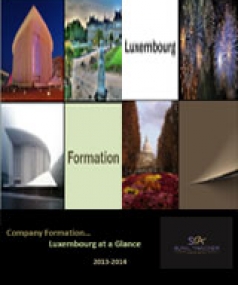Regulatory framework of mergers in Russia
 The Russian merger control does not differ substantially from its counterpart’s country in Europe and North America. In general, it is investor-friendly, and the risk of not obtaining compensation is rarely cited as the reason for not proceeding with a trade.
The Russian merger control does not differ substantially from its counterpart’s country in Europe and North America. In general, it is investor-friendly, and the risk of not obtaining compensation is rarely cited as the reason for not proceeding with a trade.
However, the Russian merger control regime has its own specificities, the knowledge of which can be essential for a transaction to be settled smoothly and on time in Russia. The purpose of this article is to provide an overview of the Russian merger control framework and its scope, including events that trigger a filing requirement, statutory notification thresholds and some aspects of the treatment of joint ventures, restrictions on the foreign investment.
Legal Framework
Russia's merger management system is mainly regulated by Federal Law 135-FZ on the Protection of Competition "Competition Law," which came into force on October 26, 2006, to regulate competition in financial markets and of commodities. It replaced the two previous laws—1991 and 1999, respectively.
In 2007 and 2008, amendments to the law on fines and generosity linked to sales were introduced in the Russian Administrative Offenses Law, and the Federal Antitrust Authority of Russia ("FAS") adopted the revised notification rules of mergers.
In July 2009, a series of legislative amendments known as the "Second Antitrust Package" were passed, resulting in significant changes to competition law, the administrative offences law, and other legislative laws. In the context of merger management, the Second Antitrust Package raises notification thresholds, introduces exemptions for certain types of intra-group transactions, and broadens the scope of merger management to include transactions between foreigners.
In January 2012, the "Third Antitrust Package" entered into force. This reform introduced new standards of local presence applicable to transactions between foreigners, increasing and changing the notification thresholds even more. The target-related notification threshold calculation method and FAS have additional authority to clear the transaction subject to qualifying parties having fulfilled condition precedents.
In January 2014, another series of amendments to the competition law was enacted. The most important of these was to eliminate the post-dismissal notification requirement in almost all cases (except as described in section 2.2 below). This move was made to ease the administrative burden of FAS and allow us to focus on large transactions that require prior approval.
In January 2016, the "Fourth Antimonopoly Package" introduced further amendments to the Competition Law. This includes (i) the introduction of a pre-dismissal notice system related to joint venture agreements between competitors (reaching a certain financial threshold). (ii) Abolish Russian corporate registration with a market share of 35% or more.
In 2018, FAS announced another bill, the Fifth Antimonopoly Package. However, it is unclear whether it will pass with amendments, and if so, whether it will affect the current merger management regime. The latest draft of the bill, among other things, clarifies changes in the review period for foreign-to-foreign transactions, the establishment of compulsory licenses as a merger, and the status of trustees / independent experts approved by the FAS will monitor the implementation of merger measures remedies.
It is widely accepted that FAS may have done more to clarify the scope and implications of the merger management provisions. However, FAS has made significant improvements in obtaining approval for merger management. The procedure is generally predictable and transparent as compared to the past few years.
Regulatory Framework
- Transactions Subject to Clearance
The merger management rules include a set of notification requirements that distinguish and apply three broad categories of transactions:
- Acquisition by acquiring of shares, assets, or other control over a Russian commercial or financial institution or a non-Russian subject entity. Meet the local test presence.
- Establishment, merger or accession of a Russian company in accordance merger or accession of a Russian company in accordance with the Russian restructuring system.
- Conclude a joint venture agreement between competitors.
Cross-border M & A transactions usually fall into the first category of transactions. These typically include the direct acquisition of shares in the Russian target or the acquisition of a Russian target outside Russia that controls a Russian legal entity or has significant sales in Russia. The practical importance of the second category is very limited.
The third category was introduced in January 2016 (as part of the fourth anti-monopoly package). To date, it has not received a widespread practical application, but now we see its growing importance.
Notification thresholds (exceeding those requiring authorization to monitor the merger) are linked to the assets and turnover of the parties to the transaction. All Russian thresholds are very low compared to Western merger control regimes, which means that almost all cross-border acquisitions require prior authorization. Typically, merge authorization mode is a pause in nature, i.e.
a transaction should not complete until authorization is granted (except for some intra-group transactions that require post-closing notification. However, in some cases, it may be desirable to first separate companies subject to merger authorizations in Russia and transfer them later (after obtaining merger authorizations).
- Inter-group Transaction
This is a feature of the Russian Merger Regulation Administration, which generally extends to transactions between entities belonging to the same group. However, there are some exceptions to this. Some inter-group transactions do not need to be cleared; For others, filing a post-closing notice with the FAS is sufficient (rather than obtaining a pre-closing clearance). These exceptions apply in the following cases:
Parent Approval is not required for transactions between a parent entity and its subsidiary. This also applies to cases where a unit is 'transferred' with a parent or subsidiary chain, subject to the requirement. However, at each stage, more than 50% of the units involved by the shareholders are attached.
 The statutory wording of this exemption is narrow, but it is widely applied by the FAS. Specifically, the FAS generally acknowledges that this exception applies to the transfer of sister companies within the same group, with parties indirectly providing more than 50% of the shareholding to the related transactions. In practice, this exemption has proven to be an effective tool for presale restructuring and engraving, enabling transactions from abroad to be executed more quickly
The statutory wording of this exemption is narrow, but it is widely applied by the FAS. Specifically, the FAS generally acknowledges that this exception applies to the transfer of sister companies within the same group, with parties indirectly providing more than 50% of the shareholding to the related transactions. In practice, this exemption has proven to be an effective tool for presale restructuring and engraving, enabling transactions from abroad to be executed more quickly
- Intra-group transactions that do not cover the first exemption may require a post-closing notice (filed within 45 days after the intake) if the group discloses its structure publicly.
in compliance with the below rules:
- A list of all entities involved in the group is submitted to the FAS at least one month before the relevant transaction. The FAS then publishes this list on its official website;
- As of the closing date of the related transaction, the list must be correct and up-to-date, that is, without changes in the group (including the addresses and CEOs of the companies).
Generally, this pre-closing disclosure process can facilitate and expedite transaction implementation. In practice, however, some foreign groups may leverage due to the process as its complex and broad rules defining a group and the FAS's strict approach towards any minor changes if three are within a group.
- Treatment of Joint Ventures
- General treatment of joint ventures
Establishing a joint venture often involves the acquisition of property, shares, or rights by the joint venture entity from its founder and/or third party. Consequently, the general merger control rules applicable to the acquisition of shares/assets/rights and the establishment/merger of the following entities will apply. The practical implication of this is that the establishment of a joint venture may require either
- approval of a joint venture agreement and/or (ii) blanket approval of the merger. In other words, creating a joint venture is considered the acquisition of shares, assets, or rights by a newly formed joint venture entity from its founders. Consequently, joint ventures generally do not require approval under the general rules if (I) a legal entity is not formed, or (ii) the new entity is financed only with cash contributions.
- Treatment of Foreign-to-Foreign Transactions
Russian competition law follows the "theory of effects." That is, if a foreign-to-foreign transaction/activity can affect competition in the Russian market, such a transaction/activity applies. Currently, foreign-to-foreign transactions are
- located in a Russian entity, or
- a company that directly or indirectly controls a Russian entity, or Entities havening Wealth that owns considerable assets. Or
- an entity whose turnover in Russia exceeded 1 billion rubles (approximately 13 million euros) during the previous year's transaction.
 There is no legal guidance regarding the calculation of the threshold mentioned in (iii) above. Traditionally, the common understanding has been that the threshold should be assessed individually for each non-Russian company.
There is no legal guidance regarding the calculation of the threshold mentioned in (iii) above. Traditionally, the common understanding has been that the threshold should be assessed individually for each non-Russian company.
However, according to the unofficial details of the FAS released in August 2016, the threshold is calculated on an aggregate basis. That is, for all non-Russian companies in the target group.
Competition law does not specifically regulate foreign transactions. The financial threshold, the procedures, and the timing apply are the same as for domestic transactions.
Conclusion
- Over the past decade, the Russian control of Russian integration has turned into a civilized manner, much like Western Europe and North America. Important features remain, such as the risk of rejection for formal reasons and the choice of AS FAS for conduct.
- Also, large-scale Russian integration controls continue to focus on ownership control. Often the FAS requests additional information to disclose rather than respond to explicit competition issues of end-users, group formations, and corporate affiliations.
- However, despite the challenges of the process, the process of overcoming integration in Russia is generally predictable and investor-friendly. The maximum review period is three months and may never take longer (savings in the rarest cases of pre-closing measures). In recent years, FASA has given the green light to a number of transactions, including significant overlaps. FAS treatment is usually 'digested' for both parties. There are some instances where this transaction was terminated due to the conditions imposed by the FAS.
- The FAS is generally neutral in its assessment, and Russian integration control has been severely affected by the international geopolitical situation and sanctions. Last but not least, all these states are in conflict with the Russian foreign investment system, where the filing and review process is often unpredictable, cumbersome and time-consuming.
 English
English
 عربي
عربي Русский
Русский 官话
官话 português
português
 Türk
Türk 











